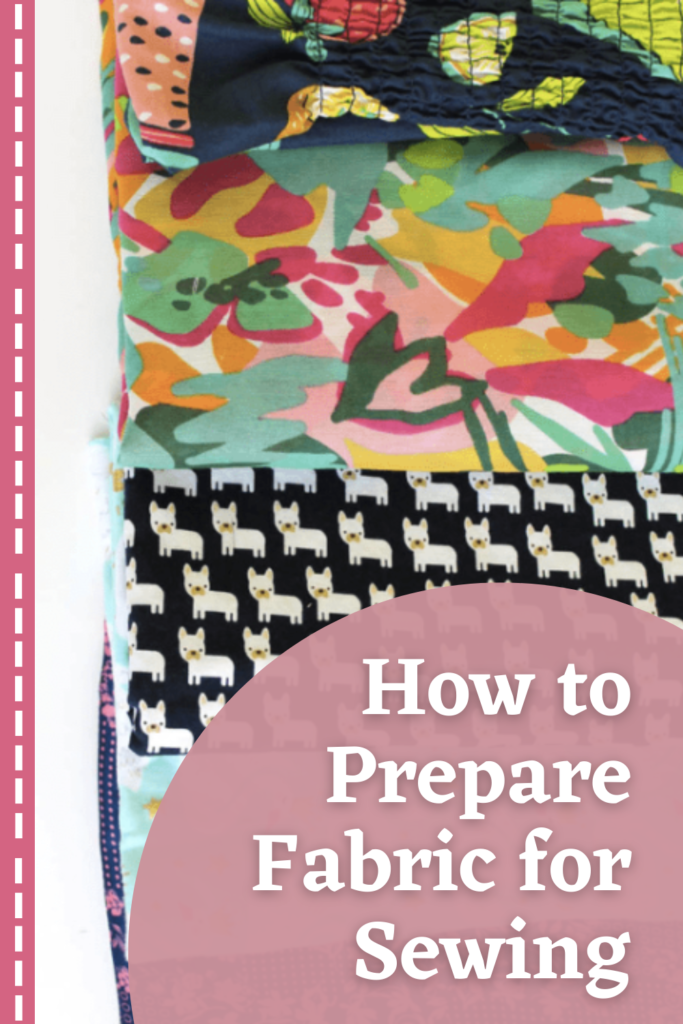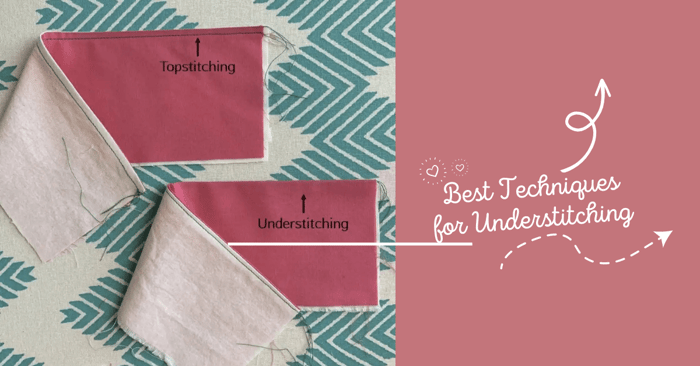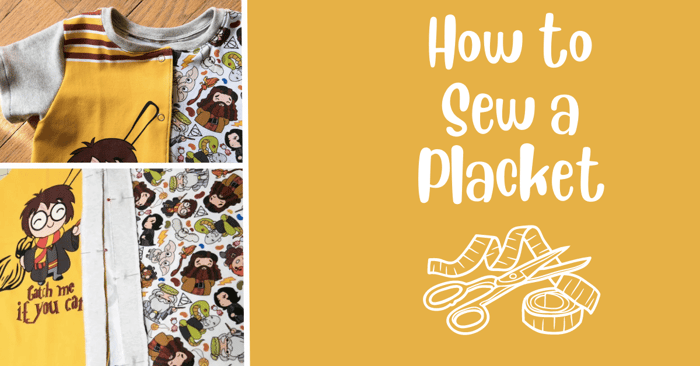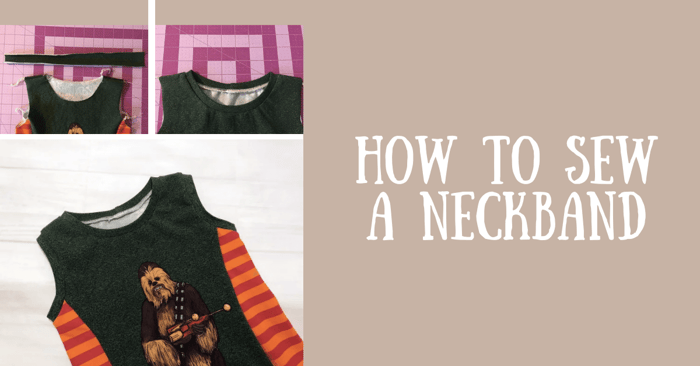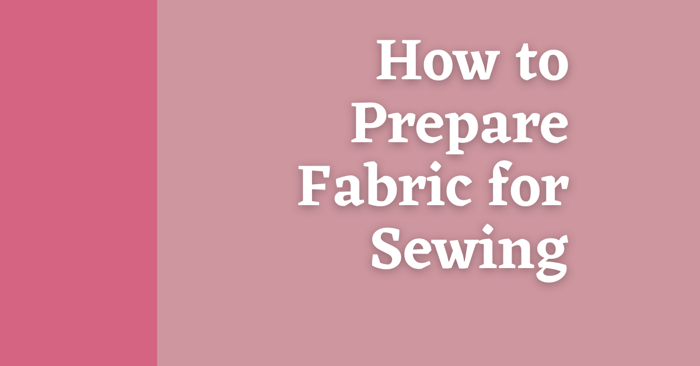
How to Prepare Fabric for Sewing
Lets learn how to prepare fabric for sewing. We all know that the core of sewing is fabric – without fabric, what could we sew? But do you know how to prepare your fabric before sewing? Maybe you haven’t even given that a lot of thought? Well, I’m here today to break down the process of prepping fabric.
How to Prepare Fabric for Sewing
What is prepping fabric? Prepping fabric is the process of getting the fabric ready for use. This step starts before cutting the fabric and definitely before you start sewing it. Usually, this means washing, drying, and possibly labeling the fabric. Why should you prep fabric? There are tons of answers to this but basically washing and drying your fabric before you start removes chemicals, and sizing agents and shrinks your fabric.
Starting your sewing project with prepped fabric is the first step of success in your final product. I’m sure we have all experienced or heard of someone who stitched up that beautiful garment to only have it shrink so much in the washing/drying process that it doesn’t fit. What is the point of sewing if the end result isn’t useful? A little time spent at the beginning cleaning your fabric for your sewing project is always the best way to start.
Basic Care Instructions:
- Instructions for New Fabric: Read the instructions on the bolt of fabric when you are buying it (if it has instructions.) Take a photo if you know you won’t remember or are buying a lot of fabric. These instructions can be really helpful on the best way to launder your fabric. If the instructions say, “Dry Clean Only” then you probably need to dry clean it. If you aren’t going to bring it to the dry cleaners (and your garment in the future) then don’t buy it.
- Good Idea to Wash Fabric Immediately: I like to throw my fabric into the washer as soon as it comes into my house. I do this because it will be ready for use in the future and you won’t have to wait to start the project. You will know immediately if it will be a problematic fabric (the red dye ran everywhere.)
- The general rule is, “Wash and dry your fabric in the same manner in which you will wash and dry your final garment.” If you have no intention of hand washing and line drying your final garment then why would you hand wash and line dry the fabric first?
- Any piece of fabric that will be sewn into a garment gets washed, no exception. You will wash it once you start wearing it, so you wash it first
- Label Fabric Pieces: Once I am finished prepping my fabric I label it with three things: Yardage and Width (2 yards, 44″ wide,) Fabric Type (100% Cotton) and usually the word “Washed.” The word washed indicates that it has been prepped and is ready to use. You could also add the date, place of purchase, and amount paid but I keep it simple. I usually write this on a scrap of paper and pin it to the selvage edge of the fabric.
- Color Catchers: When in doubt about fabric color bleeding, use color catchers to get the excess dye. You can buy these at most stores that sell washing machine detergent. They are inexpensive, can be reused multiple times (until they are very dark or black), and really work to protect the rest of the fabric. If you are washing a large piece of red fabric or a quilt, throw in 2. You can even make your own color catchers, google them to find the recipe and ingredients.
Exceptions:
- When to Not Wash Fabric or Textile: Fabric that will be used for handbags, home decor, or any item that won’t normally be washed.
- Quilting:Quilting cotton will be used for quilts. This is a personal choice, but I like to make the quilt with unwashed fabric. Quilt and bind it and then wash the whole thing. My reason is that when I buy quilting cotton it is usually in small cuts so washing it ahead of time causes you to lose some of the fabric due to raveling and shrinkage. Also, the sizing agent that is put onto these fabrics produces a crisper fabric thus making it easier to use for quilting. Once washed the fabric becomes softer and slightly distorted. This is a preference. I know some quilters that wash every single piece of fabric (no matter if it is a small cut) before they start. I don’t, except…
- A quilt back is a unique fabric. If you are going to use Minky or some other cuddle substrate on the back of your quilt, I do recommend to pre-wash it first. It will shrink considerably more than quilting cotton so make sure to wash it before you baste the quilt.
- Dry Clean Only – Above I mentioned that if you aren’t going to dry clean it, then don’t buy it. My exception to this is if you are willing to lose the money you invest into it or if it is extremely cheap. I have bought $1 yard fabric that said, “Dry Clean Only” I brought it home, washed it in my washing machine and it looked and felt exactly the same. It is just a chance you will have to take. It doesn’t always work out in your favor.
How to Prepare Different Types of Fabric
For the purpose of this tutorial, I will break fabric down into three basic types: wovens, knits, and specialty. Each has a specific method of how to prepare fabric for sewing so I’ll go over each separately.
Preparing Woven Fabrics:
Woven fabrics are defined in this tutorial as fabric with no stretch. It can be anything from quilting cotton, polyester or rayon just as long as it has no real stretch. Now let’s get to how to prepare fabric for sewing when you’re using woven fabric.
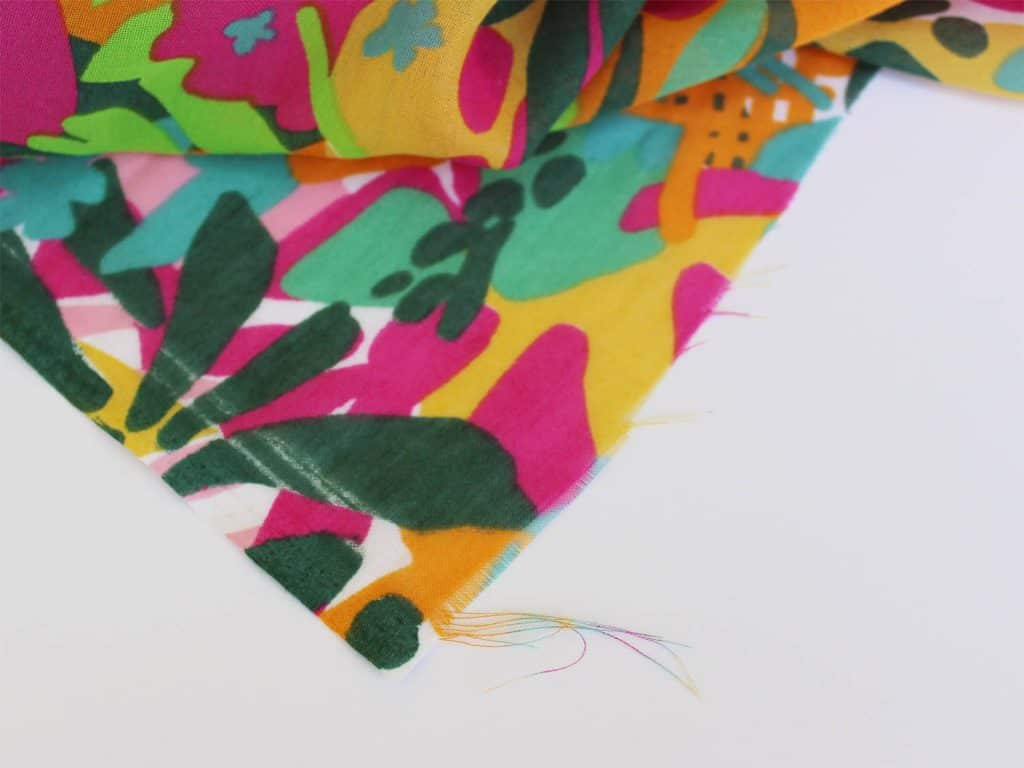 The fabric above is an odd polyester blend, so I’m not really sure what it is, it is thin, and slightly sheer and I just brought it home from the store. It will become a dress for myself so I know I need to wash and dry it.
The fabric above is an odd polyester blend, so I’m not really sure what it is, it is thin, and slightly sheer and I just brought it home from the store. It will become a dress for myself so I know I need to wash and dry it.
My first step is to look at the cut edge of the fabric and to slightly tug/pull on the fibers at the cut edge. How did that cut edge behave? Was the weave really tight and it barely raveled? Was it a loose weave and it raveled a lot? Mine was kinda in the middle. I tugged on the cut edge and some threads came loose but stopped unraveling about 1/8″ into the fabric.
What does this tell me? When I wash it, it will unravel some but probably not too badly. So I continue on without doing anything else.
How do I decide how to wash it? Well, it will be a dress for me and I know my laundry style I will separate my clothes from the family and I will wash them in the machine on the delicate cycle. I avoid hand washing at all costs so I won’t do it now. Am I going to always use a specialty cleaner? No. So I’ll use my regular detergent. Does this have bright colors that may run? Yes, so I’ll throw in a color catcher.
I washed this 3-yard cut of fabric on the hand wash cycle in my top-loading energy-rated machine, it washed in warm water. I used my regular detergent and I threw in a color catcher. The cut of fabric was washed with another cut of fabric plus some clothes that needed the hand wash cycle. I mix my fabric in with my clothing and rarely just wash the fabric by itself. The exception to that is if it is really red and I’m afraid of even the color catchers not catching it all (which has never actually happened.)
What if your laundry style is different and there is no way you are going to separate your clothes from the rest of the family? Go for it! It is better to find out the fabric isn’t going to wash well now than to make the garment, toss it in your regular load and it falls apart. This being said, you have to keep some things in mind. If you buy a nice expensive piece of silk and then toss it in with your kid’s dirty soccer uniforms in hot water I don’t think the silk will like this and you won’t like your ruined silk. Prepping fabric has to be done with some forethought and common sense. When in doubt, Google it!
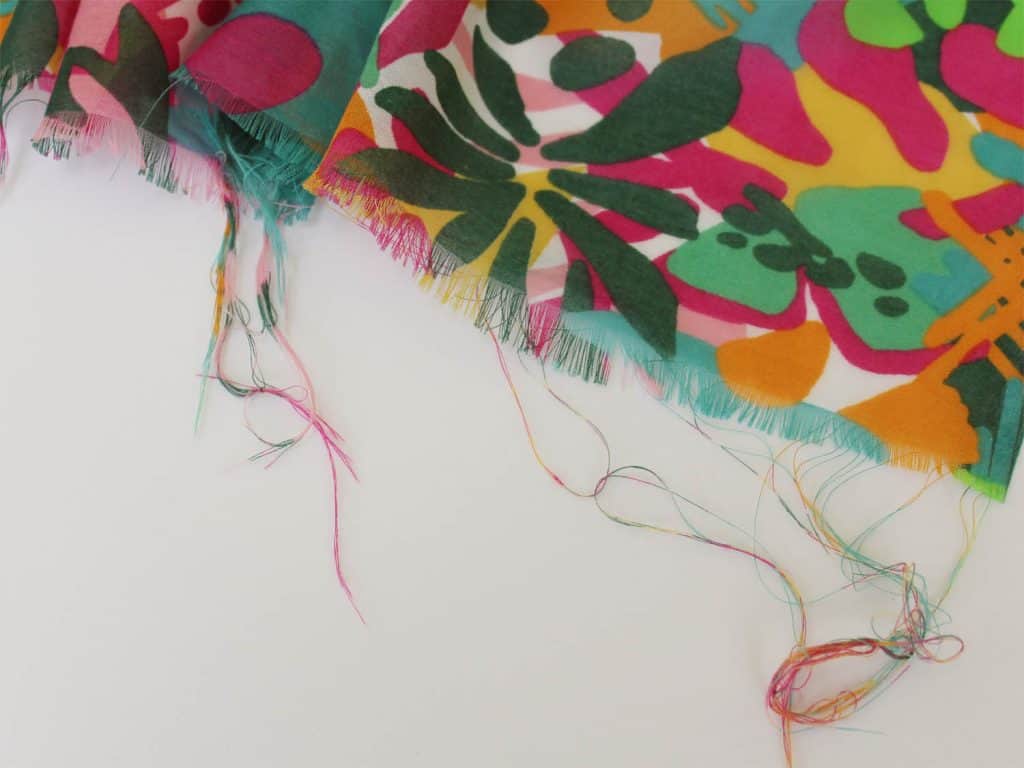 Now my fabric has come out of the washing machine, clean and smelling fresh. What do we look for? Did the fabric change in an odd way? Did the colors change? Does it have pulls/tears/runs? If so, you need to really think about it. If the colors ran or your color catcher is now bright pink you may want to wash it again and pull more of that dye out. Was their fraying or ripples? Does the fabric have defects like pulls/tears/runs then you might not want to use it or mark the defects and make sure you cut around them?
Now my fabric has come out of the washing machine, clean and smelling fresh. What do we look for? Did the fabric change in an odd way? Did the colors change? Does it have pulls/tears/runs? If so, you need to really think about it. If the colors ran or your color catcher is now bright pink you may want to wash it again and pull more of that dye out. Was their fraying or ripples? Does the fabric have defects like pulls/tears/runs then you might not want to use it or mark the defects and make sure you cut around them?
Everything look good? My cut of fabric looked pretty much the same as the way it went in. Now is time to look at those two cut raw edges. What do they look like? Are there loose threads hanging off? Maybe the loose threads are all knotted and made a big mess? Deal with that now.
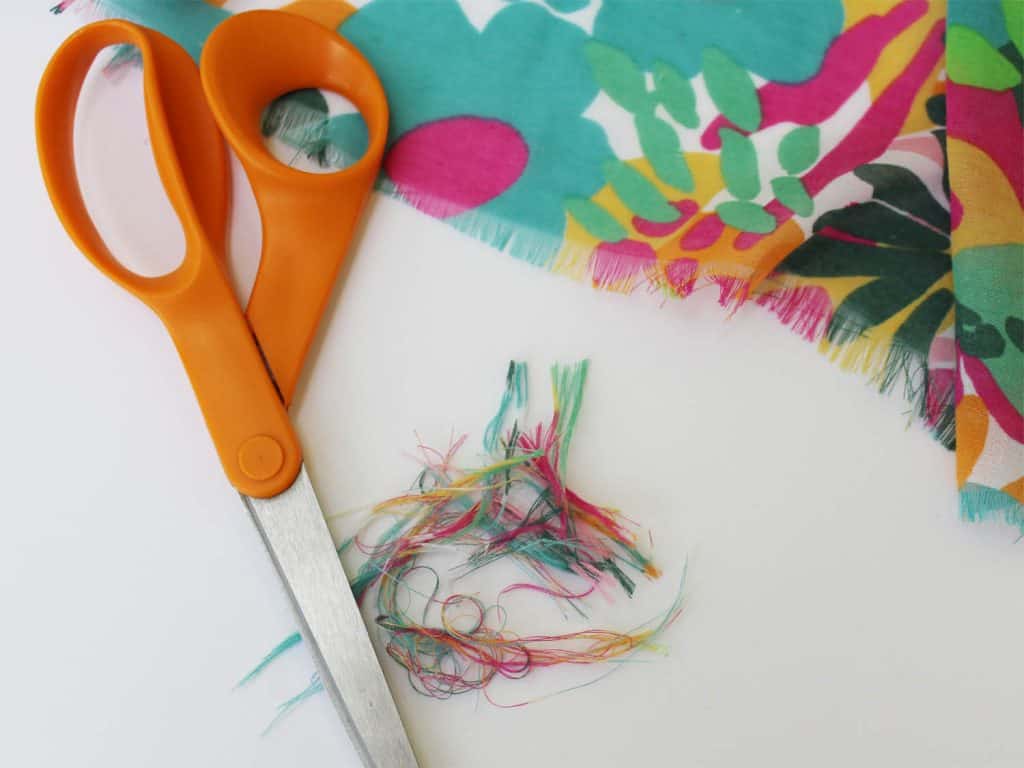 Take your sewing scissors and trim off all the loose threads on the two cut edges of your fabric. If it is all wrapped up in your fabric, carefully trim and remove all these knotted up loose threads.
Take your sewing scissors and trim off all the loose threads on the two cut edges of your fabric. If it is all wrapped up in your fabric, carefully trim and remove all these knotted up loose threads.
Once all the threads are cut off and discarded it’s time to see how the cut edges unraveled. You can see on my fabric above that in some spots the fabric unraveled about 1/4″ but in some spots it unraveled 5/8.” What does this tell us? In my case it tells me that I need to finish the edges of my seams when I make my dress because if I don’t those seams may come apart in the future. So I’ll either do french seams, zig-zag or serge the edges.
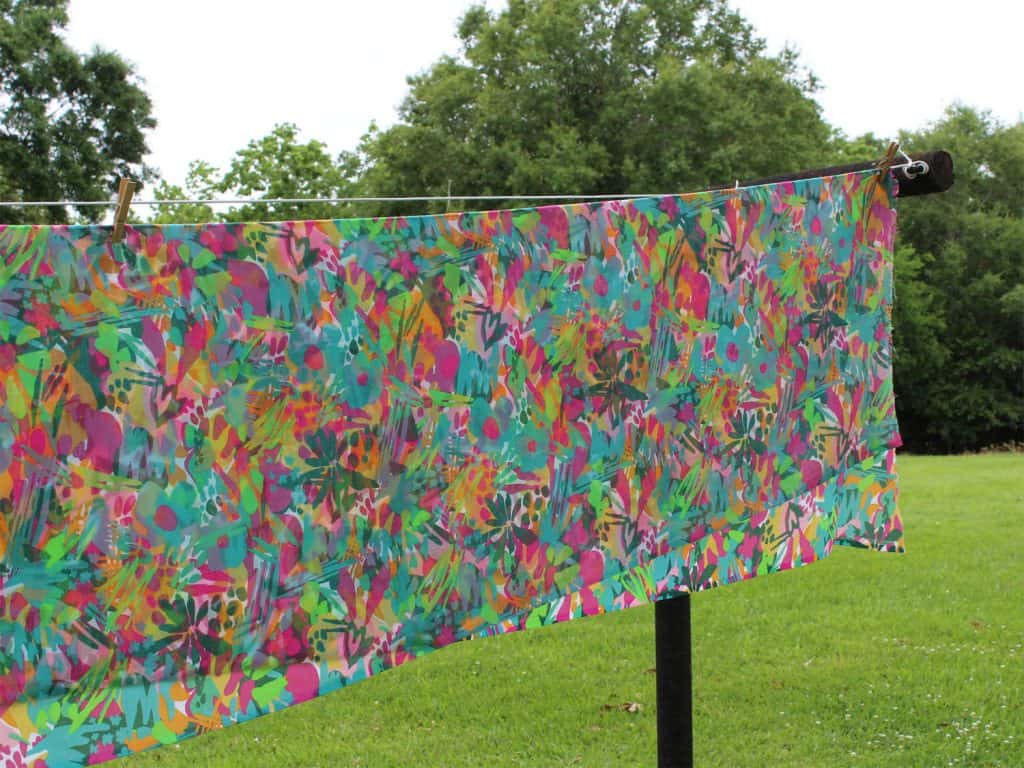 It is time to talk about drying your fabric! There are several ways to dry your fabric, line dry, laying flat to dry and using the dryer.
It is time to talk about drying your fabric! There are several ways to dry your fabric, line dry, laying flat to dry and using the dryer.
Line Drying:
I am fortunate enough to have an old fashioned clothes line and I hang 90% of my fabric and clothing outside on a sunny day to dry. My woven fabric from above was hung on the clothesline and dry within an hour. It remained virtually wrinkly free because the weight of the fabric hanging tends to “pull out” the wrinkles.
Pros: Conserves energy (good for the environment,) clothes and fabric tend to have less wrinkles, clothes last longer, sun can bleach out stubborn stains.
Cons: You have to have a clothesline and it does take up space outside, you have to be weather conscious, the sun can fade clothes so it is best to hang them inside out. It takes time to hang clothes on a line.
Laying Flat to Dry:
I own a small foldable mesh hanging rack that is sold for the purpose of laying your clothes flat to dry inside or out. I use this rack for sweaters and other delicates that I don’t want to hang or put into the dryer.
Pros: Conserves energy, clothes last longer, doesn’t take up much space. Can be hung outside for faster drying.
Cons: You have to store the rack/hanging device, it usually is small and only holds a few items of clothing, hard to dry larger items such as large cuts of fabric. You also have to have a good place to hang the device with wet clothes and this can be in the way in your household. The slowest method when left drying inside your house.
Dryer:
If you own a washing machine then I’ll assume you already own a dryer. The most convenient method for drying your clothes but also the most damaging to them.
Pros: Fast! Can dry a lot of items at one time and can be used rain or shine.
Cons: Uses energy, clothes show more wear and tear, clothes and fabric tend to be more wrinkled, heat from the dryer can shrink fabric/clothes.
No matter which method of drying you choose when it comes time to prep your fabric, make sure you choose the method that you will use when you sew the item/garment. Don’t line dry the fabric, make the garment and then plan on just throwing it in the dryer. I guarantee it will shrink and not fit in an intended manner. You can always dry your fabric in the dryer and then use the line in the future but not the other way around.
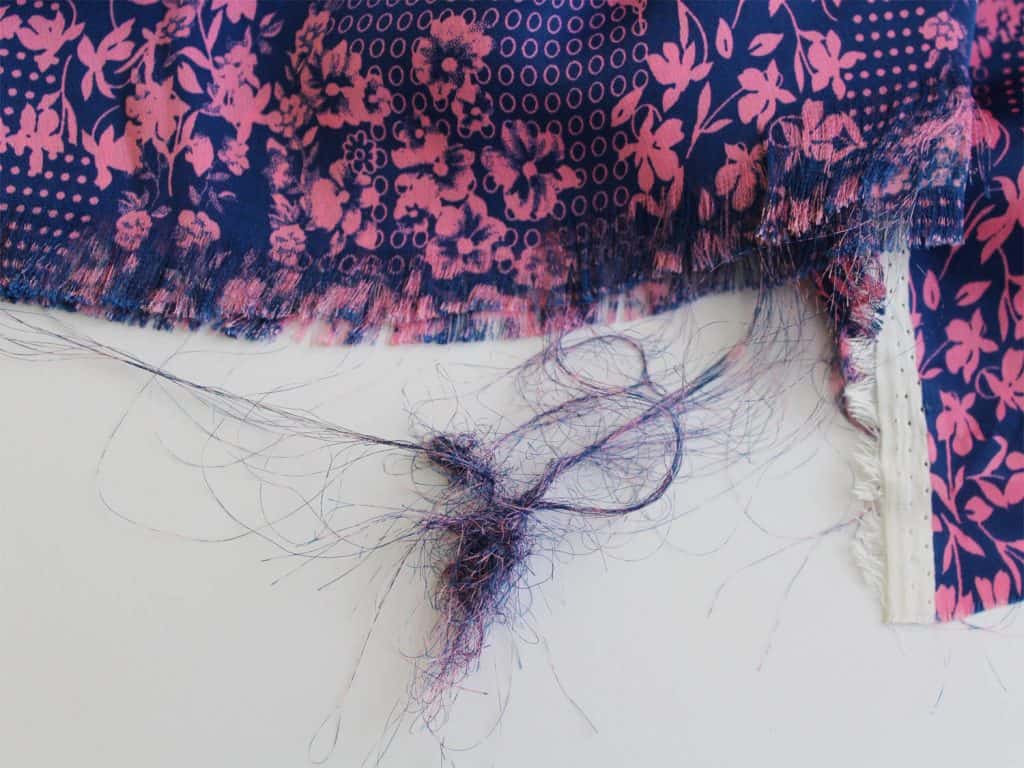 The photo above is an example of fabric that has been washed and it unraveled on the cut edge a lot. The loose threads knotted on themselves and all around the fabric. The fabric unraveled 1″ + in some spots. This fabric is a thin polyester blend. This fabric/eventually garment probably would do best with hand washing. If you aren’t going to hand wash then make sure to take the extra time and finish those seams and possibly sew an extra line of stitching on each seam, using a smaller stitch length.
The photo above is an example of fabric that has been washed and it unraveled on the cut edge a lot. The loose threads knotted on themselves and all around the fabric. The fabric unraveled 1″ + in some spots. This fabric is a thin polyester blend. This fabric/eventually garment probably would do best with hand washing. If you aren’t going to hand wash then make sure to take the extra time and finish those seams and possibly sew an extra line of stitching on each seam, using a smaller stitch length.
I hung this fabric on the line outside to air dry. If I were going to put it in the dryer it would be for a very short time on a lower heat setting.
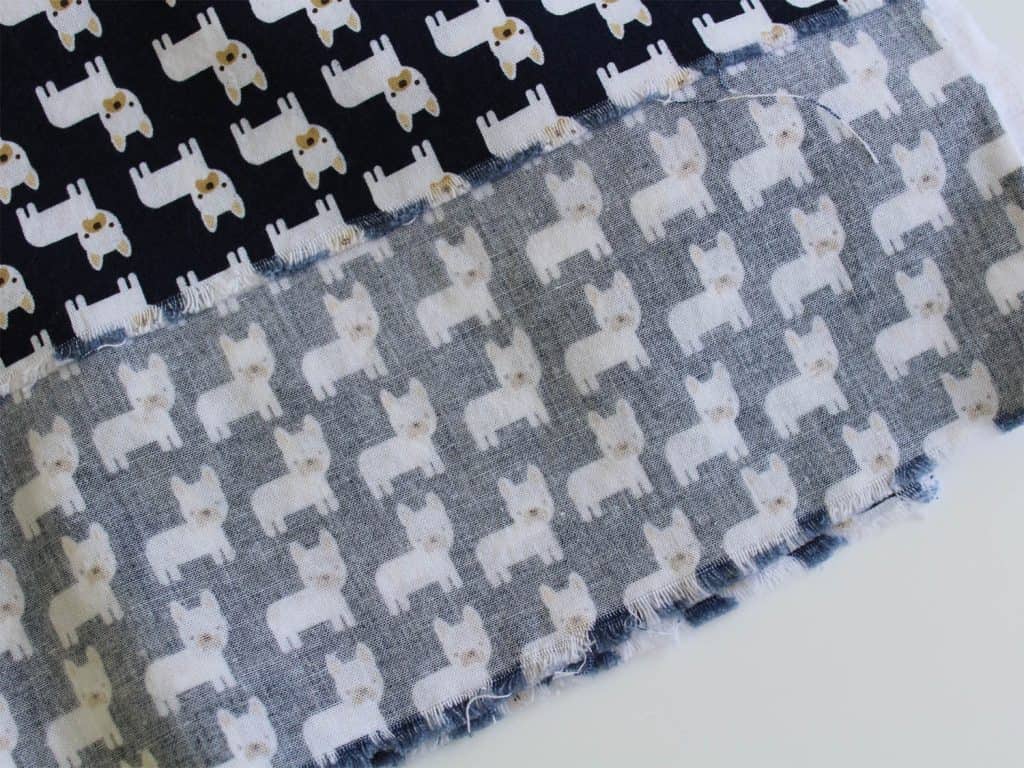 Here is an example of washed and dried quilting cotton. This will be a top for my little girl. I washed this two yard cut on a normal setting, warm water. 100% cotton has a tendency to unravel a lot and leave a lot of knotted up threads after washing. Trim them.
Here is an example of washed and dried quilting cotton. This will be a top for my little girl. I washed this two yard cut on a normal setting, warm water. 100% cotton has a tendency to unravel a lot and leave a lot of knotted up threads after washing. Trim them.
I put quilting cotton in the dryer on a normal setting and try to pull it out as soon as it is dry. The sooner you pull it out, the less wrinkles it will have. Since I trimmed all those loose threads ahead of time the fabric came out of the dryer nice and neat looking like the picture above. Quilting cotton is a denser weave fabric so it tends to unravel on the edges only about 1/8″ – 1/4″ into the fabric.
Knit Fabrics:
Knit fabrics in this tutorial are defined as fabric with stretch. It could be 2-way stretch or 4-way stretch. A variety of substrates from cotton jersey to swimsuit fabric. Let’s learn how to prepare fabric for sewing with knit fabric.
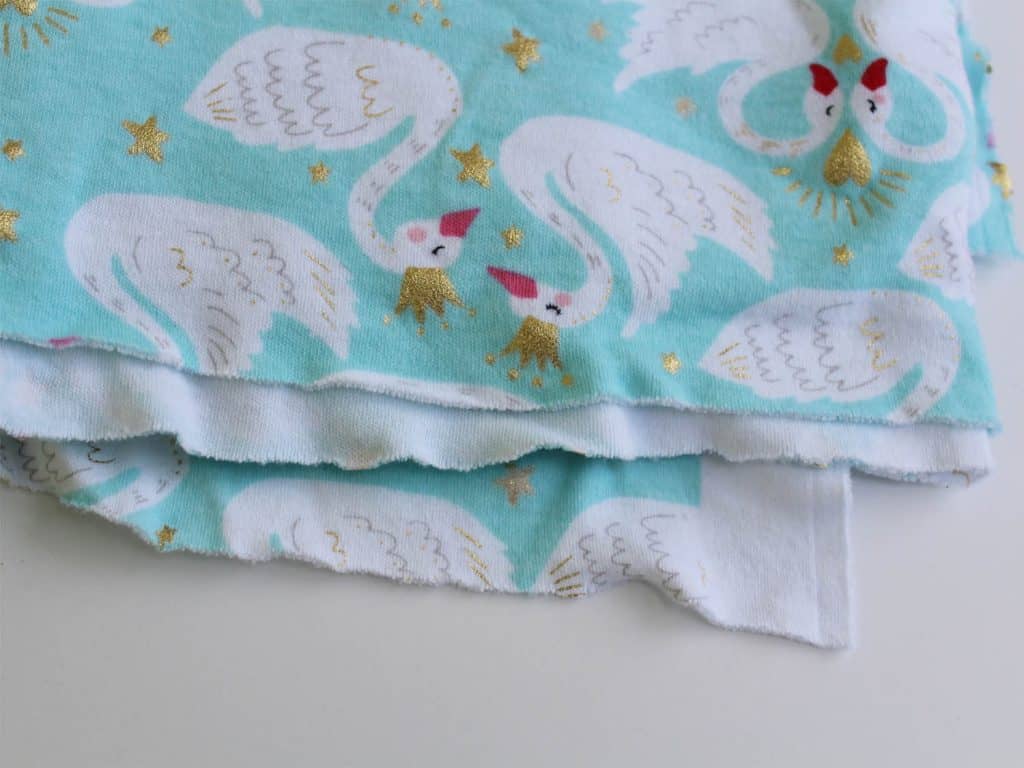 Knit fabric is probably the easiest fabric to prep because knit fabric doesn’t unravel. There are no threads to trim or mess. The main issues I have ever had with knit fabrics are shrinkage and pilling.
Knit fabric is probably the easiest fabric to prep because knit fabric doesn’t unravel. There are no threads to trim or mess. The main issues I have ever had with knit fabrics are shrinkage and pilling.
Shrinkage:
I find that knit fabric shrinks considerably more than woven and it shrinks evenly all over the entire piece of fabric. It is just the nature of knit fabric and nothing to be alarmed about but something to keep in mind. Since knits do shrink it is really important for them to be washed and dried before you start your project.
I usually wash my knits for the first time on the normal cycle in warm/hot water and dry them in the dryer. Pull them out of the dryer as soon as they are dry. I want that initial wash to shrink the fabric before I use it. After that first wash I may wash them on a gentler cycle and dry them flat in order to preserve the life of the fabric as much as possible. Keep in mind if you hang knit fabric that it will stretch out some in the hanging process.
Pilling:
If you own knit clothing then I’m sure at some point you have experienced pilling. Pilling occurs when broken fibers on the outside of the fabric become tangled and group together into little balls or knots, otherwise known as a pill. This can happen by simply wearing the garment and having the fabric rub against itself or something else. Some knits are prone to pilling more than others.
It would be nice to have some sort of way to tell if the knit fabric you are purchasing will pill but sadly it is one of those things that isn’t obvious. Some fabrics pill immediately, these fabrics can sometimes be spotted right away in the store because the simple act of the bolt rubbing against another bolt will cause the fabric to already have pills on it. Unless you like this look or shaving pills off, obviously don’t purchase this fabric. Sometimes pills don’t show up until the 4th or 5th wearing of the garment, you just never know.
I find a good way to reduce pilling is to always wash knits on a gentler cycle and always with like fabrics (don’t ever wash your knit with a towel or jeans for instance.) Lay your garments flat to dry when you can and if you have to dry them in the dryer keep them in only long enough to become dry. The more a knit rubs against another fabric or itself the more likely it is to pill. Not all knits pill it is just one of those things you need to keep an eye out for.
Specialty Fabrics:
Specialty fabric will be defined in this tutorial as any fabric that has unique properties such as decorations, lace, shirring, embroidery or anything that might need special treatment. Let’s learn how to prepare fabric for sewing when you’re using specialty fabric.
These fabrics do need special care as they usually include some item/decoration that might not hold up to the normal wear and tear of a washing machine and dryer.
Laces, sequin-covered fabrics, and embroidered fabric all need a case-by-case decision on how to wash and then dry the fabric. Read the bolt of fabric when you purchase it and take note on how it is recommended to be cared for. The majority of the time it will be dry clean only, hand wash only or gentle cycle. The only way to maintain the integrity of these pieces of fabric and the decorations will be to follow the directions.
If you end up with a lot of yardage of specialty fabric that has no directions, always err on the side of caution. Think about what type of garment you will be making and how often it will be worn and washed. A wedding gown will only be worn once, thus dry cleaning isn’t a big deal, but a jacket may be worn for years and need more cleaning, and you might not want to bring it to the dry cleaners every single time. Remember a good source of information is the internet, Google it and see what information you can find on how to care for that specific decoration/piece of fabric.
Not all specialty fabrics are as elaborate as mentioned above, but they still need special care before you wash and dry. The photo above shows a piece of shirred fabric that I bought in the store with the intention of making a dress for my daughter. The shirring has been cut through thus leaving the gathering threads exposed on the ends. Before washing I took a few minutes to serge the cut edges of both sides of the fabric. If you don’t own a serger you could simply sew a straight line 1/4″ away from the edge (2.0 stitch length) or use a zigzag stitch. This stitching secures the gathering threads and prevents them from becoming unraveled in the washing process.
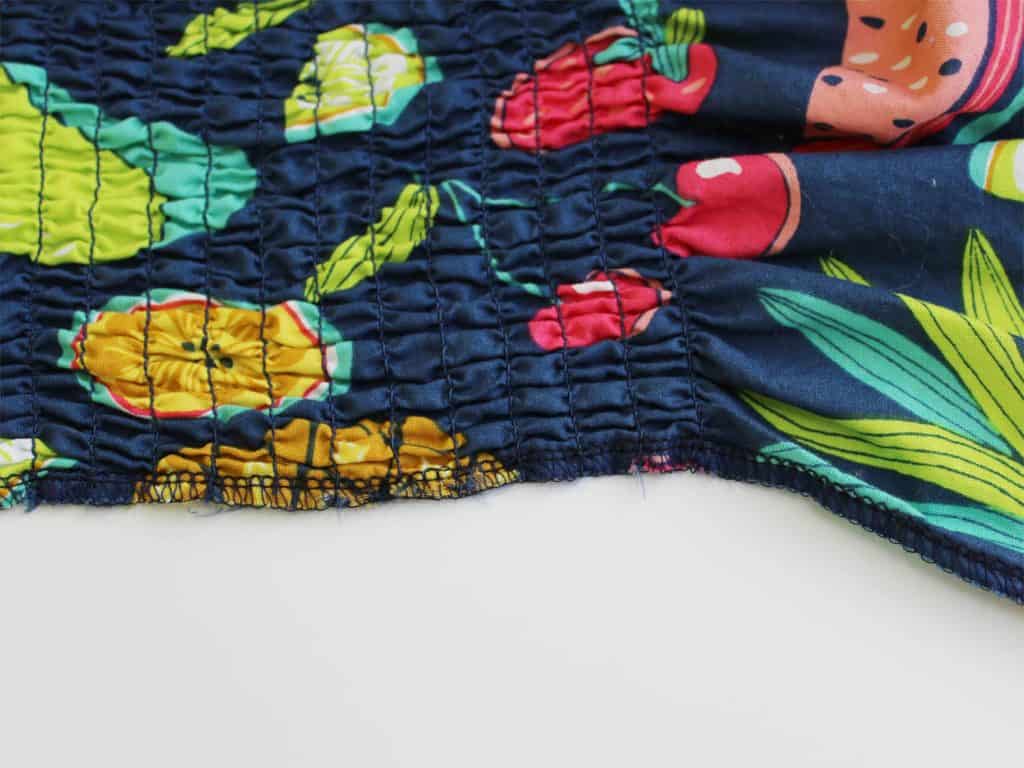 Once I had serged the edges, I washed this piece of cotton fabric on a normal cycle (warm water) and then dried it in the dryer, removing it as soon as it was dry. The photo above shows how the fabric fared after washing/drying. As you can see, nothing came un-stitched, the edges are nice and neat and very little raveling. Gone are the headaches. Now I’m ready to sew this into a dress.
Once I had serged the edges, I washed this piece of cotton fabric on a normal cycle (warm water) and then dried it in the dryer, removing it as soon as it was dry. The photo above shows how the fabric fared after washing/drying. As you can see, nothing came un-stitched, the edges are nice and neat and very little raveling. Gone are the headaches. Now I’m ready to sew this into a dress.
What is the proper way to iron fabric before sewing?
For pressed fabric, start by setting your iron to the appropriate temperature for the fabric. Place a pressing cloth over the fabric to protect it from direct heat. Press the iron down firmly and move it in a back-and-forth motion, avoiding dragging or stretching the fabric.
There you have it, the basics of how to prepare your fabric depending on the type of fabric you are working with. When in doubt look it up, otherwise with this tutorial and a little common sense your fabric (and items you make from the fabric) can last for years to come. Now that you have your fabric ready, it's time to get your pattern pieces and sewing machine and get to work. Before you leave, be sure to join us on Facebook and follow us on Instagram.
